Mercury-induced epigenetic transgenerational inheritance of abnormal neurobehavior is correlated with sperm epimutations in zebrafish
- PMID: 28464002
- PMCID: PMC5413066
- DOI: 10.1371/journal.pone.0176155
Mercury-induced epigenetic transgenerational inheritance of abnormal neurobehavior is correlated with sperm epimutations in zebrafish
Abstract
Methylmercury (MeHg) is a ubiquitous environmental neurotoxicant, with human exposures predominantly resulting from fish consumption. Developmental exposure of zebrafish to MeHg is known to alter their neurobehavior. The current study investigated the direct exposure and transgenerational effects of MeHg, at tissue doses similar to those detected in exposed human populations, on sperm epimutations (i.e., differential DNA methylation regions [DMRs]) and neurobehavior (i.e., visual startle and spontaneous locomotion) in zebrafish, an established human health model. F0 generation embryos were exposed to MeHg (0, 1, 3, 10, 30, and 100 nM) for 24 hours ex vivo. F0 generation control and MeHg-exposed lineages were reared to adults and bred to yield the F1 generation, which was subsequently bred to the F2 generation. Direct exposure (F0 generation) and transgenerational actions (F2 generation) were then evaluated. Hyperactivity and visual deficit were observed in the unexposed descendants (F2 generation) of the MeHg-exposed lineage compared to control. An increase in F2 generation sperm epimutations was observed relative to the F0 generation. Investigation of the DMRs in the F2 generation MeHg-exposed lineage sperm revealed associated genes in the neuroactive ligand-receptor interaction and actin-cytoskeleton pathways being effected, which correlate to the observed neurobehavioral phenotypes. Developmental MeHg-induced epigenetic transgenerational inheritance of abnormal neurobehavior is correlated with sperm epimutations in F2 generation adult zebrafish. Therefore, mercury can promote the epigenetic transgenerational inheritance of disease in zebrafish, which significantly impacts its environmental health considerations in all species including humans.
Conflict of interest statement
Figures

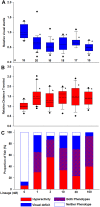
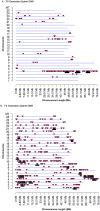
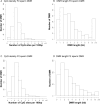
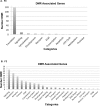
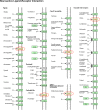
Similar articles
-
Atrazine induced epigenetic transgenerational inheritance of disease, lean phenotype and sperm epimutation pathology biomarkers.PLoS One. 2017 Sep 20;12(9):e0184306. doi: 10.1371/journal.pone.0184306. eCollection 2017. PLoS One. 2017. PMID: 28931070 Free PMC article.
-
Alterations in sperm DNA methylation, non-coding RNA and histone retention associate with DDT-induced epigenetic transgenerational inheritance of disease.Epigenetics Chromatin. 2018 Feb 27;11(1):8. doi: 10.1186/s13072-018-0178-0. Epigenetics Chromatin. 2018. PMID: 29482626 Free PMC article.
-
Developmental origins of transgenerational sperm DNA methylation epimutations following ancestral DDT exposure.Dev Biol. 2019 Jan 15;445(2):280-293. doi: 10.1016/j.ydbio.2018.11.016. Epub 2018 Nov 27. Dev Biol. 2019. PMID: 30500333 Free PMC article.
-
What is an epigenetic transgenerational phenotype? F3 or F2.Reprod Toxicol. 2008 Jan;25(1):2-6. doi: 10.1016/j.reprotox.2007.09.001. Epub 2007 Sep 11. Reprod Toxicol. 2008. PMID: 17949945 Free PMC article. Review.
-
Gestational arsenic exposure and paternal intergenerational epigenetic inheritance.Toxicol Appl Pharmacol. 2020 Dec 15;409:115319. doi: 10.1016/j.taap.2020.115319. Epub 2020 Nov 6. Toxicol Appl Pharmacol. 2020. PMID: 33160984 Review.
Cited by
-
Epigenetic transgenerational inheritance of testis pathology and Sertoli cell epimutations: generational origins of male infertility.Environ Epigenet. 2019 Aug 29;5(3):dvz013. doi: 10.1093/eep/dvz013. eCollection 2019 Jul. Environ Epigenet. 2019. PMID: 31528361 Free PMC article.
-
Impact of Endocrine Disruptors upon Non-Genetic Inheritance.Int J Mol Sci. 2022 Mar 20;23(6):3350. doi: 10.3390/ijms23063350. Int J Mol Sci. 2022. PMID: 35328771 Free PMC article. Review.
-
Epigenetic inheritance of DNA methylation changes in fish living in hydrogen sulfide-rich springs.Proc Natl Acad Sci U S A. 2021 Jun 29;118(26):e2014929118. doi: 10.1073/pnas.2014929118. Proc Natl Acad Sci U S A. 2021. PMID: 34185679 Free PMC article.
-
Environmental epigenetics in zebrafish.Epigenetics Chromatin. 2017 Oct 5;10(1):46. doi: 10.1186/s13072-017-0154-0. Epigenetics Chromatin. 2017. PMID: 28982377 Free PMC article. Review.
-
Advances in Zebrafish as a Comprehensive Model of Mental Disorders.Depress Anxiety. 2023 Jun 20;2023:6663141. doi: 10.1155/2023/6663141. eCollection 2023. Depress Anxiety. 2023. PMID: 40224594 Free PMC article. Review.
References
-
- WHO. World Health Organization WHO Ten chemicals of major public health concern. http://www.who.int/ipcs/assessment/public_health/chemicals_phc/en/ 2010
-
- Barbante C, Schwikowski M, Doring T, Gaggeler HW, Schotterer U, Tobler L, et al. Historical record of European emissions of heavy metals to the atmosphere since the 1650s from alpine snow/ice cores drilled near Monte Rosa. Environ Sci Technol. 2004;38(15):4085–90. - PubMed
-
- Schuster PF, Krabbenhoft DP, Naftz DL, Cecil LD, Olson ML, Dewild JF, et al. Atmospherc mercury deposition during the last 270 years: a glacial ice core record of natural and anthropogenic sources. Environ Sci Technol. 2002;36(11):2303–10. - PubMed
-
- UNEP. Reducing Mercury Use in Artisanal and Small-Scale Gold Mining: A Practical Guide. UNEP Chemicals Branch; Geneva, Switzerland 2012.
-
- UNEP. Sources, Emissions, Releases and Environmental Transport. Global Mercury Assessment 2013; Geneva, Switzerland: UNEP Chemicals Branch; 2013.
MeSH terms
Substances
Grants and funding
LinkOut - more resources
Full Text Sources
Other Literature Sources
Miscellaneous

